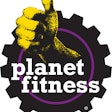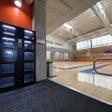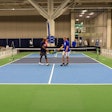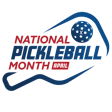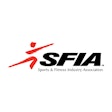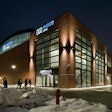Source: National Athletic Trainers' Association
Thursday, March 26, 2015
9:30 a.m. eastern time
NFL Headquarters, 345 Park Avenue, New York City
In 2014, more than 15 high school athletes lost their lives during sports or physical activity. Thousands of student athletes develop acute and long-term injuries as a result of participation. Research shows that many of these deaths and conditions could be avoided if best practices were in place.
Please join the National Athletic Trainers’ Association (NATA) and American Medical Society for Sports Medicine (AMSSM) for a national press conference where sports medicine leaders will discuss and unveil efforts to promote current health and safety protocols. The goal is to develop a collaborative forum to share resources, tools, best practices and strategies designed to advance the safety of student athletes in secondary schools with a focus on emergency action plans (EAPs).
Speakers will address heat-related illnesses, cardiac conditions, head and neck injuries and the need for EAPS in all high schools. While there have been advances in protocol (all states now have concussion laws in place), only 22 percent of states have met the recommendations that every school or organization sponsoring athletics develop an EAP for managing serious and or potentially life-threatening injuries. An editorial on emergency practice guidelines in high school sports will be published that morning in the April Journal of Athletic Training, NATA’s scientific publication.
For the first time ever, and following the press conference, NATA and AMSSM with the support of the Korey Stringer Institute and the NFL, will bring together key stakeholders in high school athletics to discuss these initiatives and improve safety in youth sports. Leaders from all 50 states will be in attendance at the meeting.
Key statistics:
- Emergency Action Plans: 12 percent of states meet the recommendations that every school has a written Emergency Action Plan that is distributed to all staff members; 10 percent of states fulfill the recommendation that the EAP is specific to each venue and includes maps and/or specific directions to that venue.
- Heat Acclimatization Guidelines: 14 of the 50 states currently meet the minimum best practices with regard to heat acclimatization. An estimated 28 percent of states meet the recommendation that total practice time should not exceed three hours in any one day.
- Automated External Defibrillators: Only 50 percent of states have met the recommendations that all athletic trainers, coaches, administrators, school nurses and physical education teachers have access to an AED on school property and at all school sanctioned athletic events/activities.
Speakers:
Douglas Casa, PhD, ATC, FNATA, chief operating officer, Korey Stringer Institute, University of Connecticut
Exertional Heat Stroke
Jason Cates, ATC, LAT, member, Arkansas Activities Association Sports Medicine Advisory Committee; head athletic trainer, Cabot Public Schools; past president, Arkansas Athletic Trainers’ Association
Advancements in Arkansas Youth Sport Safety State Policies and Guidelines
Jonathan Drezner, MD, professor of family medicine; director of the Center for Sports Cardiology; team physician, University of Washington and Seattle Seahawks
Cardiac Conditions
Kevin Guskiewicz, PhD, ATC, FNATA, Kenan Distinguished Professor and director of the Matthew Gfeller Sport-Related Traumatic Brain Injury Research Center, University of North Carolina, Chapel Hill
Head and Neck Injuries
Roman Oben, director, youth and high school football, National Football League; former NFL player
Playing it Safe with Best Practices in Place
CONTACT: Media interested in attending should contact Robin Waxenberg by March 24, 212/489-8006, [email protected]
About NATA: National Athletic Trainers’ Association (NATA) – Health Care for Life & Sport
Athletic trainers are health care professionals who specialize in the prevention, diagnosis, treatment and rehabilitation of injuries and sport-related illnesses. They prevent and treat chronic musculoskeletal injuries from sports, physical and occupational activity, and provide care for acute injuries. Athletic trainers offer a continuum of care that is unparalleled in health care. The National Athletic Trainers’ Association represents and supports 39,000 members of the athletic training profession. Visit www.nata.org
About AMSSM:
American Medical Society for Sports Medicine (AMSSM) is a multi-disciplinary organization of 2,700 sports medicine physicians dedicated to education, research, advocacy and the care of athletes of all ages. The majority of AMSSM members are primary care physicians with fellowship training and added qualification in sports medicine who then combine their practice of sports medicine with their primary specialty. AMSSM includes members who specialize solely in non-surgical sports medicine and serve as team physicians at the youth level, NCAA, NFL, MLB, NBA, WNBA, MLS and NHL, as well as with Olympic teams. By nature of their training and experience, sports medicine physicians are ideally suited to provide comprehensive medical care for athletes, sports teams or active individuals who are simply looking to maintain a healthy lifestyle. Visit www.amssm.org
















